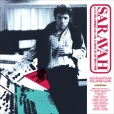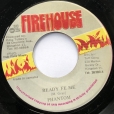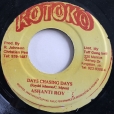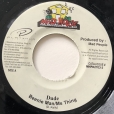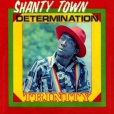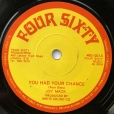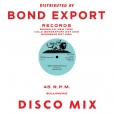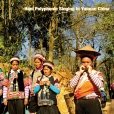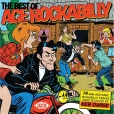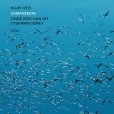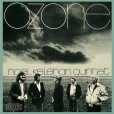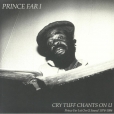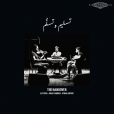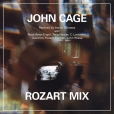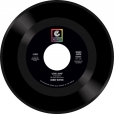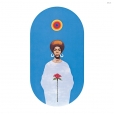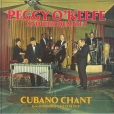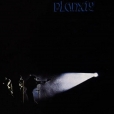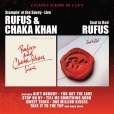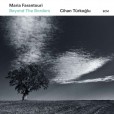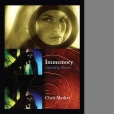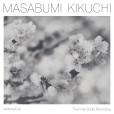Your basket is empty

Magnificent, hypnotically insurgent, boogie-down bubblers, with Sugar Minott at the mic, leading burnished horns and dapper, soulful backing vocals. Like a cross between Ain’t No Stopping Us Now and Armagideon.
Jerry Johnson heads out on the flip: a killer uptempo instrumental, with swirling brass over a pared-down, propulsive rhythm.
‘As with many other ethnic groups of the area, a traditional singing pattern is used with each singer adapting words to context. Many of these songs express intimate, strong emotions that bring tears to the performers while they are singing. The cascading mournful feel of this music is beautifully transcendent. You’ve never heard anything like it.
‘Instruments used by the ensemble include the babi (single tree leaf ) and mepa (tree leaf rolled up into the shape of a horn or mirliton), a chiwo (three-stringed bowed instrument), a labi (six-holed bamboo flute), a lahe (three-stringed small lute) and a meba (vertical reed instrument).’
‘Stunning, moody, spiritual jazz from Ireland, recorded in 1979; featuring original compositions such as the deep collectors’ cut Spon Song, subtle Latin flavours on Spacer’s Delight, and a beautiful modal arrangement of the traditional Irish air Castle of Dromore.
‘A legendary recording in Ireland, Ozone reflects Kelehan’s keen appreciation of classic quintet-era Miles, with touches of the cerebral fusion of Ian Carr and the arranging genius of Neil Ardley. Not just a landmark Irish jazz set, Ozone is a lost classic of European jazz more widely.’
Licensed from producer John D’Ardis. Remastered at Abbey Road using the master-tapes; cut at D&M; pressed at Pallas. Presented with previously unseen photographs of the band, and their commentary.
A deadly trump card from Outernational. Essential, startling stuff. Bim bim bim.
‘Elegantly combines the delicacy of classical Arabic music, the raw expressiveness of Egypt’s countryside music, and the spontaneity of free improvisation, carefully obliterating the artificial separation between acoustic and electronic instruments. Despite the remarkable absence of any percussion or drums, The Handover is an extremely groovy band, with an ability to slow down and accelerate the tempo in almost telepathic synchronization at exactly the right moments.
‘Alongside the tight ensemble playing there is plenty of room for individual expression as the oud, synthesizer and violin take turns playing solos on top of repetitive riffs. Native Alexandrian Ayman Asfour plays violin with breathtaking beauty, not afraid to make it buzz, squeak and rattle. Belgian/Norwegian keyboardist Jonas Cambien makes the synthesizer a melodic instrument in its own right, at times evoking almost classical Maqam, at other moments coming straight out of an Egyptian wedding. The oud forms the backbone, as Aly Eissa’s solos guide the listener from minimalist, meditative drones, to a compelling climax, and back to earth.
‘There is much more to The Handover’s sound than the obvious references to Arabic and Egyptian music. The opening drone section of the album is pushed towards abstraction and even noise, and the vintage Farfisa organ gives the music a touch of 70s psychedelic rock. The repetitive riffs can be reminiscent of Embryo’s experiments combining krautrock with influences from the middle-east, but the use of repetition to induce trance dates way back in Egyptian music, and is present in many rituals like Sufi and moulid celebrations. The composed melodies on this album couldn’t be possible without Eissa’s deep love for this music. And what The Handover does with this composed material couldn’t be possible without three strong individual voices, their love to play music together and their dedication to push the traditions forward.’
A double header from the Detroiter. Both highly-sought-after sides are reissued here for the first time.
Only previously issued as a UK promo 7”, Lend A Hand became one of the biggest ‘modern’ Northern Soul tracks of all-time after spins at venues like the Highland Room at the Blackpool Mecca, and Wigan Casino. The track was first championed by DJ Colin Curtis in 1974.
From 1969, Come See What’s Left Of Me is on the mellower side of Northern Soul, but still a dancer, and another classic. First ushered onto the Northern scene at the Stafford All-Nighters back in 1985.
‘With just four long, leisurely, percussion-drenched tracks, it’s a latin-jazz jam-band dream, with none other than Joe Henderson adding smoky tenor that ratchets up the intensity and mystery, and fusion avatars Stanley Clark and Lenny White super-charging the grooves. Think of it as a direct descendant of In A Silent Way, but with a lysergic twist and Miles’s tentative phrases replaced by Gasca’s brash, sassy blasts.’ (Jazzwise)
This is sublime. Check it out!
‘The most affecting solo piano album I’ve heard since Keith Jarrett’s much-loved The Melody At Night, With You more than 20 years ago’ (Richard Williams).
‘... the notes hang individually in the air as though being held up to the light… It’s so slow and patient, it becomes an observation of passing time’ (The Wire).
